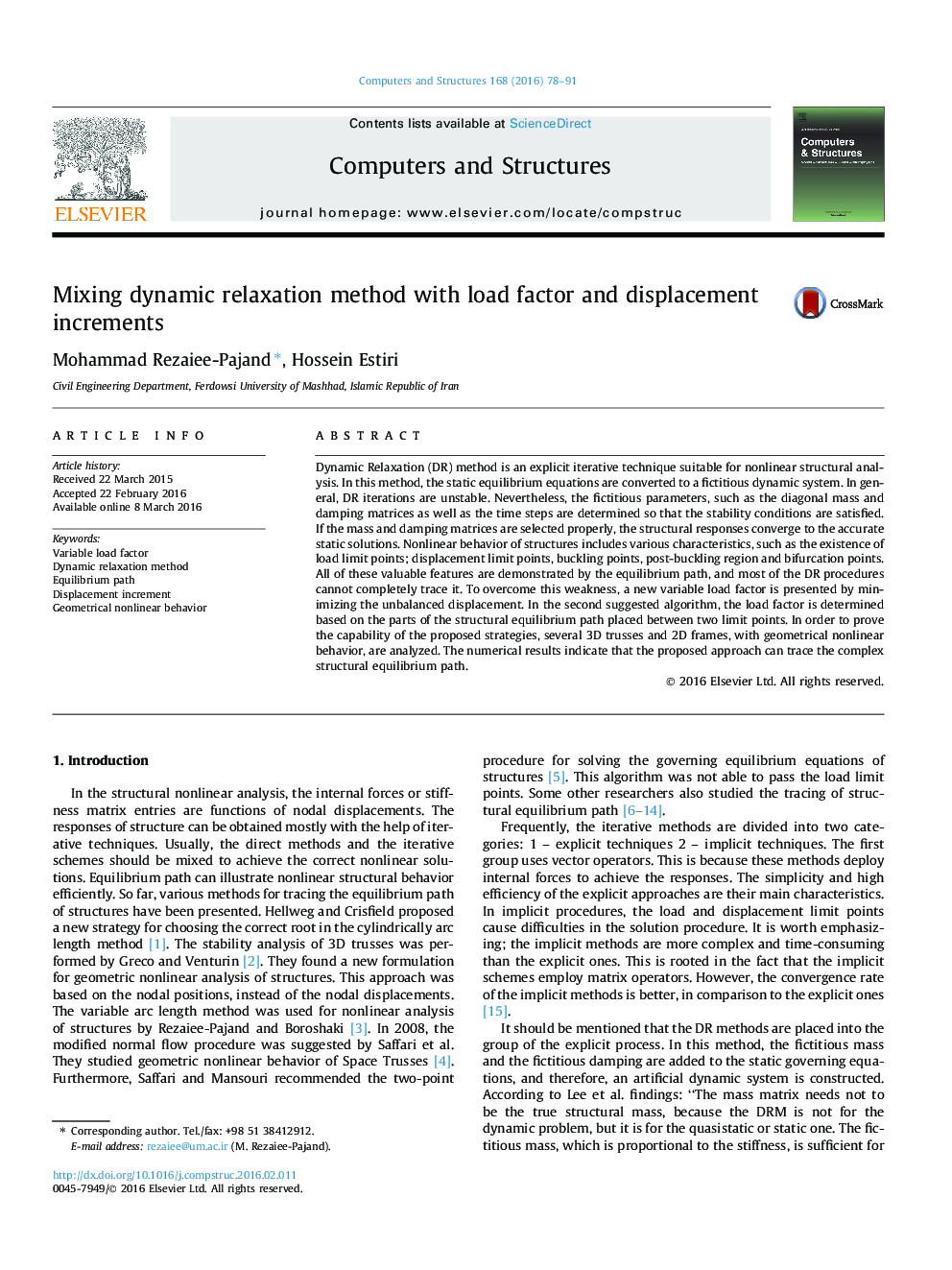| Article ID | Journal | Published Year | Pages | File Type |
|---|---|---|---|---|
| 509925 | Computers & Structures | 2016 | 14 Pages |
•A new variable load factor is proposed for Dynamic Relaxation Method.•This formula is based on the minimizing of the unbalanced displacement.•To prove the capability and efficiency of the presented scheme, several numerical tests are performed.•The results indicate that the suggested approach can trace the complex structural static paths.
Dynamic Relaxation (DR) method is an explicit iterative technique suitable for nonlinear structural analysis. In this method, the static equilibrium equations are converted to a fictitious dynamic system. In general, DR iterations are unstable. Nevertheless, the fictitious parameters, such as the diagonal mass and damping matrices as well as the time steps are determined so that the stability conditions are satisfied. If the mass and damping matrices are selected properly, the structural responses converge to the accurate static solutions. Nonlinear behavior of structures includes various characteristics, such as the existence of load limit points; displacement limit points, buckling points, post-buckling region and bifurcation points. All of these valuable features are demonstrated by the equilibrium path, and most of the DR procedures cannot completely trace it. To overcome this weakness, a new variable load factor is presented by minimizing the unbalanced displacement. In the second suggested algorithm, the load factor is determined based on the parts of the structural equilibrium path placed between two limit points. In order to prove the capability of the proposed strategies, several 3D trusses and 2D frames, with geometrical nonlinear behavior, are analyzed. The numerical results indicate that the proposed approach can trace the complex structural equilibrium path.
